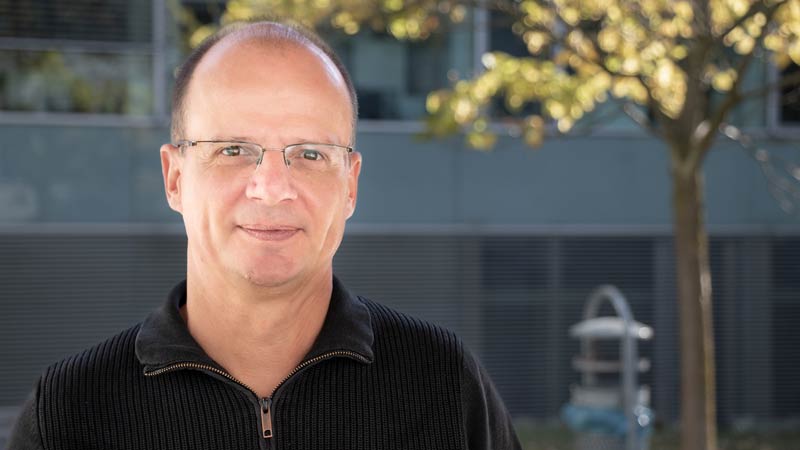Dirk Lindemann Group
Molecular and cell biology of retrovirus-host cell interactions – Development and application of retroviral gene transfer and drug screening systems

My lab is interested in studying molecular- and cell biological aspects of the retroviral replication strategy and the development retroviral vector systems and their potential application for gene transfer. The current research interests of our lab are, (1) the analysis of viral and cellular protein interactions involved in retroviral replication, (2) the functional analysis of viral glycoproteins and their role for entry and particle release processes, and (3) the development and application of retroviral vector systems for gene transfer into different target tissues.
Retrovirus-host cell interactions
Our research concentrates on a special type of retrovirus, the foamy viruses (FV). Their replication strategy shows many unique features compared to all other retroviruses. Interestingly some of these bear strong homology to features of the replication strategy of Hepatitis B virus (HBV).
Recently, we unraveled unique features of the FV capsid protein biosynthesis that leads to a transient nuclear localization of the protein. Currently we are investigating specific interactions of the FV capsid protein with host cell proteins and their importance for viral replication with a special focus on processes of capsid assembly and disassembly. Furthermore, we are interested in elucidating the mechanism of reverse transcription initiation of FVs that unlike other retroviruses already convert their packaged RNA genome to a large extent during virus assembly.
Structure and function of viral glycoproteins in assembly and entry processes.
Our research interests focus on different viral glycoproteins such as the murine leukemia virus (MLV) Env protein, the vesicular stomatitis virus (VSV) glycoprotein G or the FV Env protein.
For the FV glycoprotein we have discovered several unique features. For example it undergoes a highly unusual biosynthesis. Furthermore, its co-expression is essential for particle egress since the FV capsid protein lacks a membrane-targeting domain and associated with cellular membrane through a highly specific interaction with the glycoprotein. Currently we are characterizing various steps in FV assembly and entry using fluorescent protein tagged viral structural proteins and time lapse imaging involving single viral particle tracing analysis.
Development and application of retroviral vector systems
Retroviral vector systems have been the first viral vectors developed for application in gene therapeutic settings and are today still one of the viral vector systems most frequently used in clinical applications. One advantage of retroviral vectors over other viral vector systems is the stable expression of transgene due to its integration into the host cell genome.
Our lab has developed vector systems based on different retroviruses such as the murine leukemia virus (MLV), the human immunodeficiency virus (HIV), or the prototype foamy virus (PFV). These vector systems allow for an efficient gene transfer into different cell types such as the hematopoietic lineage, leading to constitutive or regulatable expression of various therapeutic gene products. Currently we are exploiting the natural feature of different retroviruses to encapsidated and transmit non-viral RNAs to transiently genetically modify host cells. Furthermore we are characterizing the mechanisms of selective viral genome encapsidation during virus assembly and are exploring strategies to selectively manipulate these processes for gene transfer purposes.
Future Projects and Goals
- Identification of cellular interaction partners and cellular pathways exploited by FV for particle release
- Characterization of structural motifs of the glycoproteins involved in intracellular localization, intracellular transport, oligomerization or fusion of viral and cellular lipid membranes
- Identification of the currently unknown, ubiquitously expressed, cellular receptor of FVs
- Unraveling of cellular processes and their kinetics involved in FV target cell entry
- Generation of retroviral vector systems for targeted infection or -integration
Methodological and Technical Expertise
- Retroviral vector mediated in vitro and in vivo gene transfer
- qPCR analysis of viral protein composition
- Y2H analysis of protein-protein interaction
- Time-lapse microscopy and single viral particle tracking of viral particles
